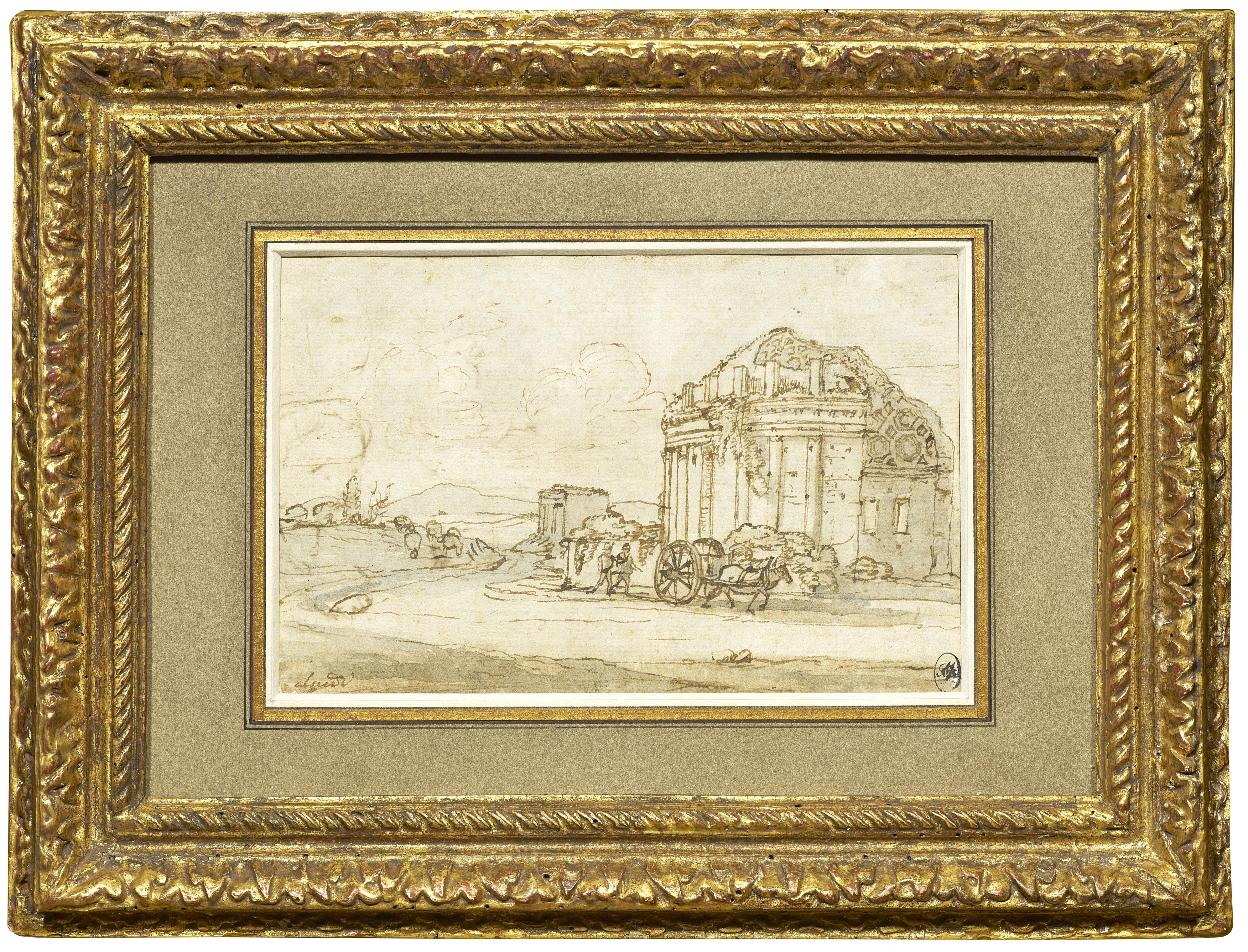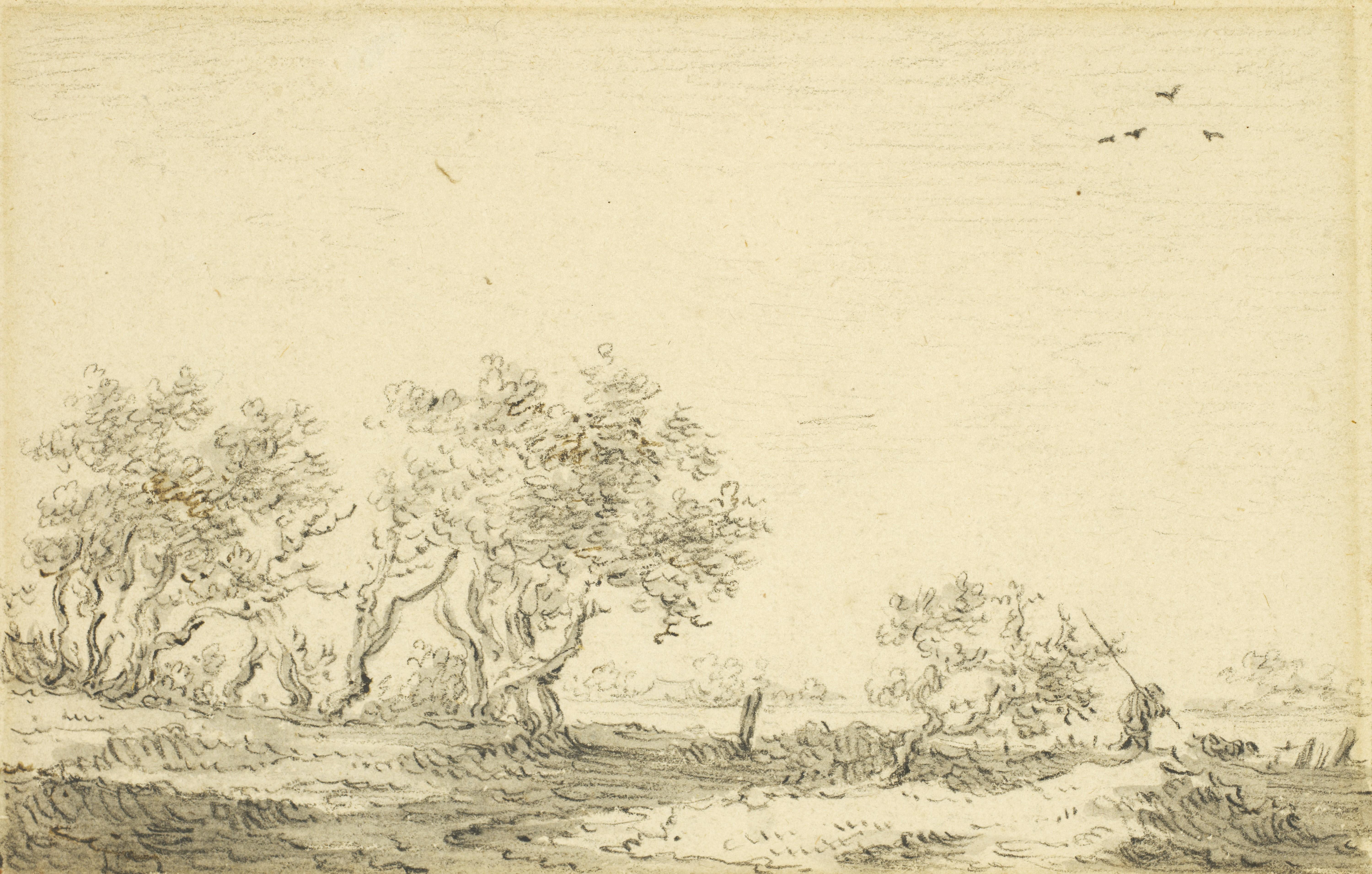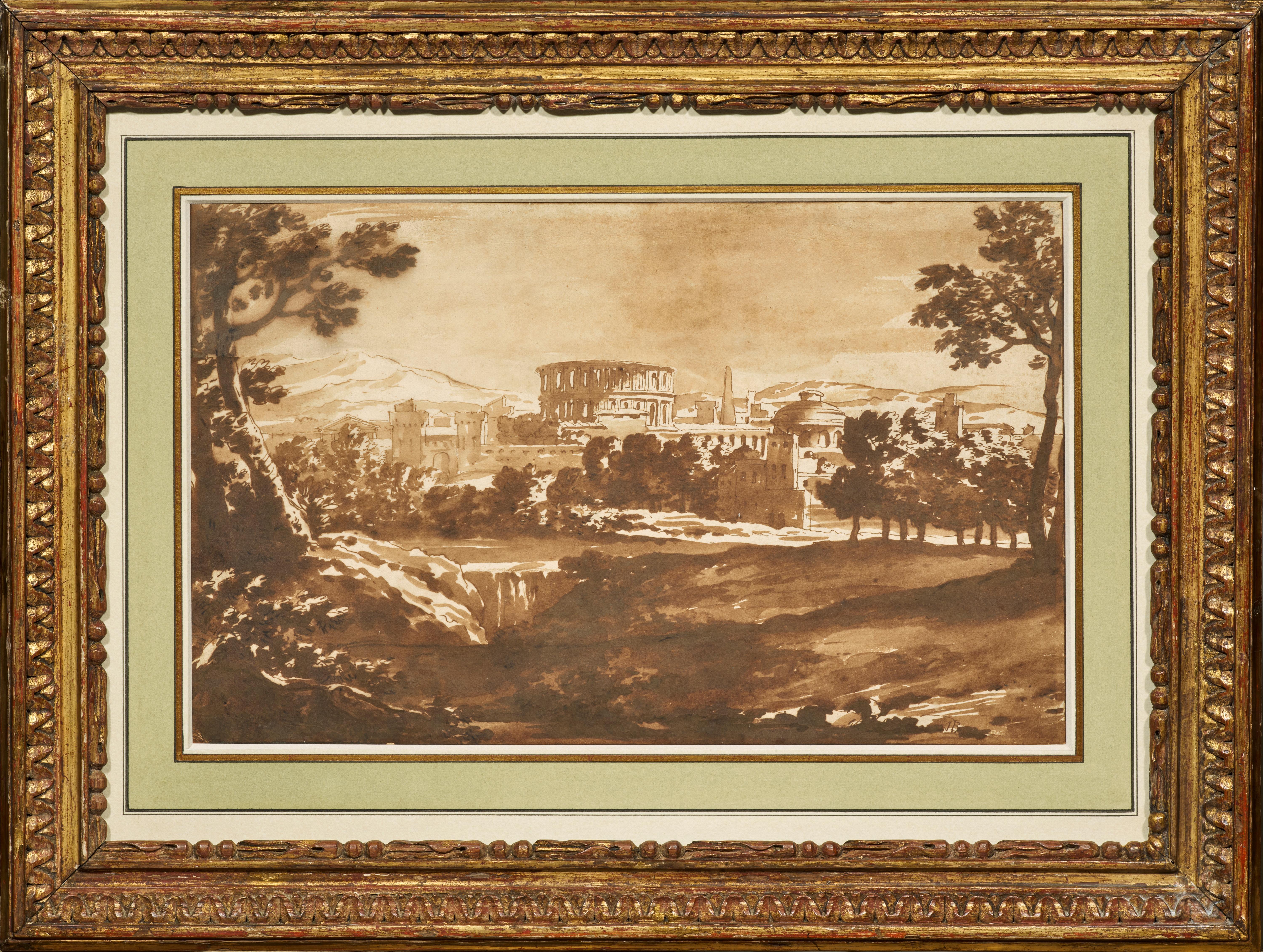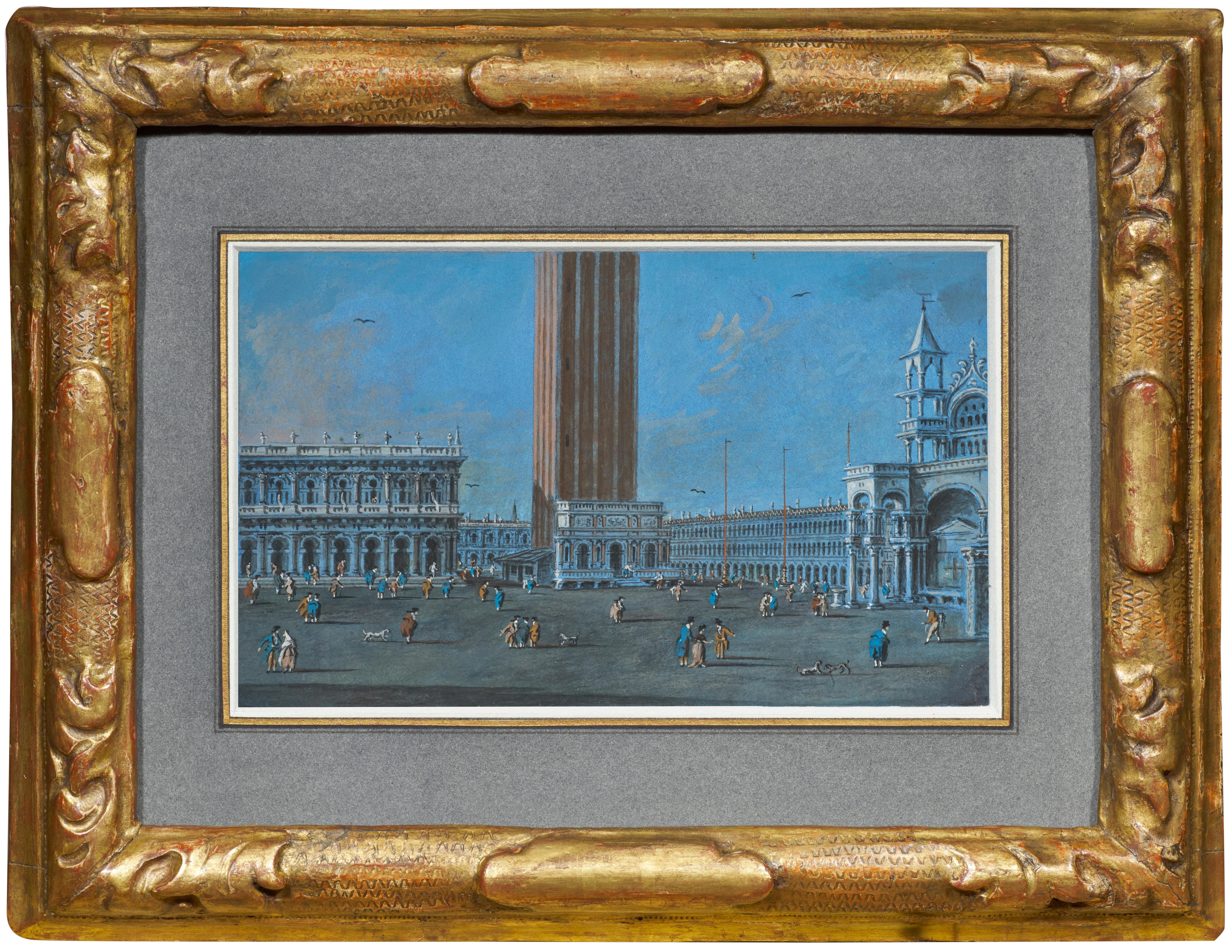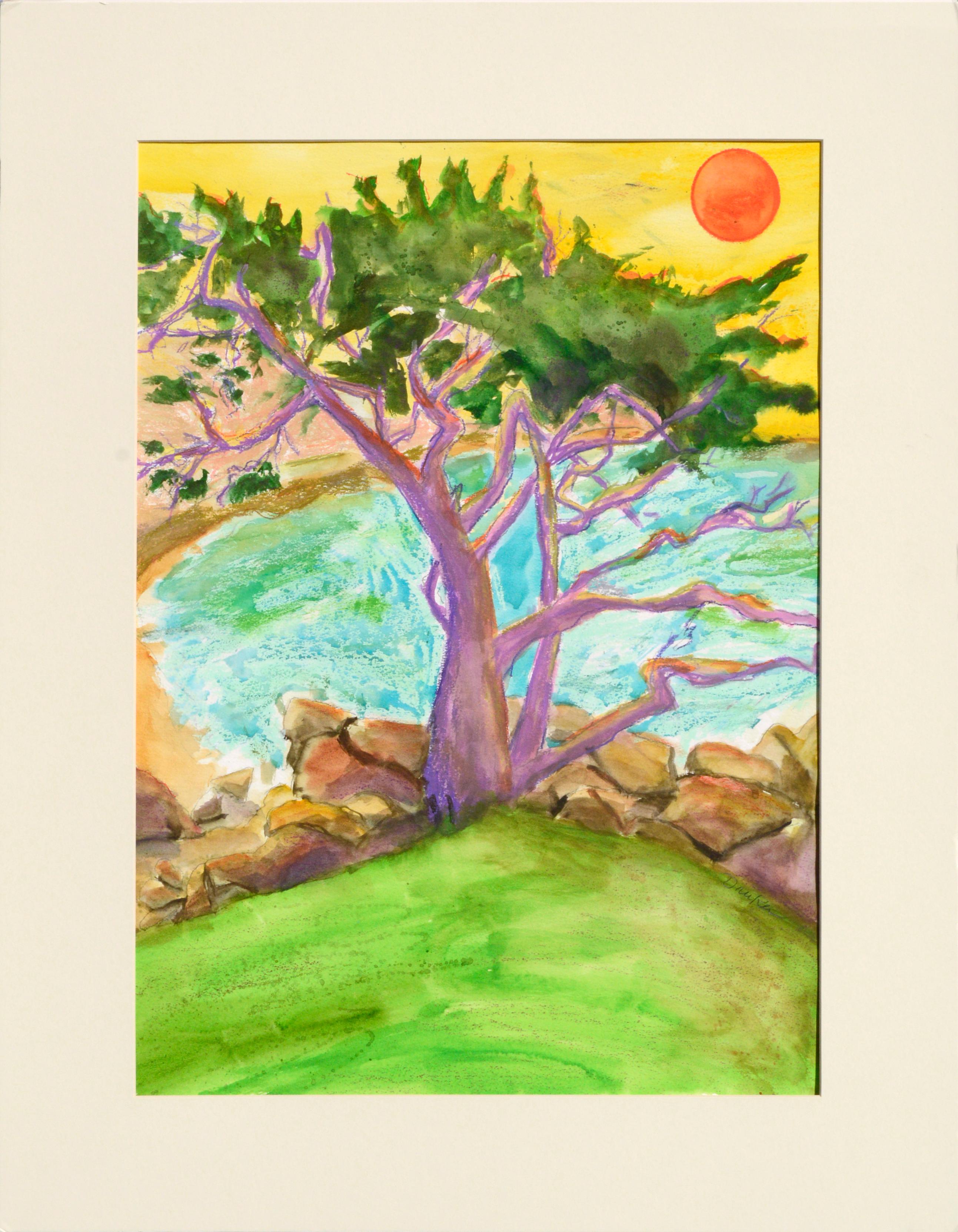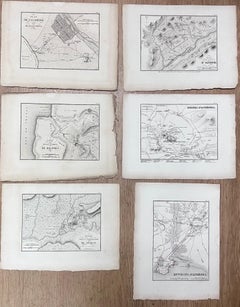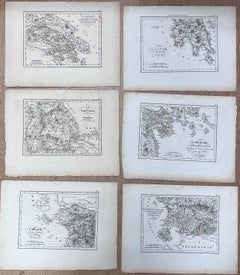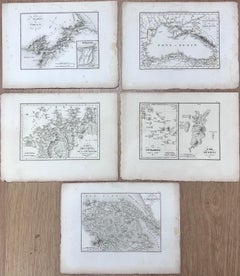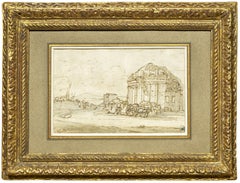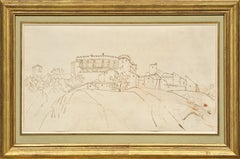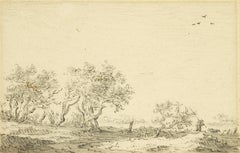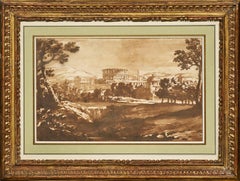Items Similar to 18th C Italian Classical Grand Tour Ancient City Old Ruins & Figures
Want more images or videos?
Request additional images or videos from the seller
1 of 10
Unknown18th C Italian Classical Grand Tour Ancient City Old Ruins & Figureslate 18th century
late 18th century
About the Item
Title: The Italian City
Artist/ School: English/ Italian School, late 18th century; a Grand Tour work.
Medium: pencil drawing.
Size: 6.75 x 9.75 inches
Provenance: from a private European collection
Condition report:
The paper is very much in tact and in good condition.
- Creation Year:late 18th century
- Dimensions:Height: 6.75 in (17.15 cm)Width: 9.75 in (24.77 cm)
- Medium:
- Movement & Style:
- Period:
- Condition:
- Gallery Location:Cirencester, GB
- Reference Number:1stDibs: LU50937384072
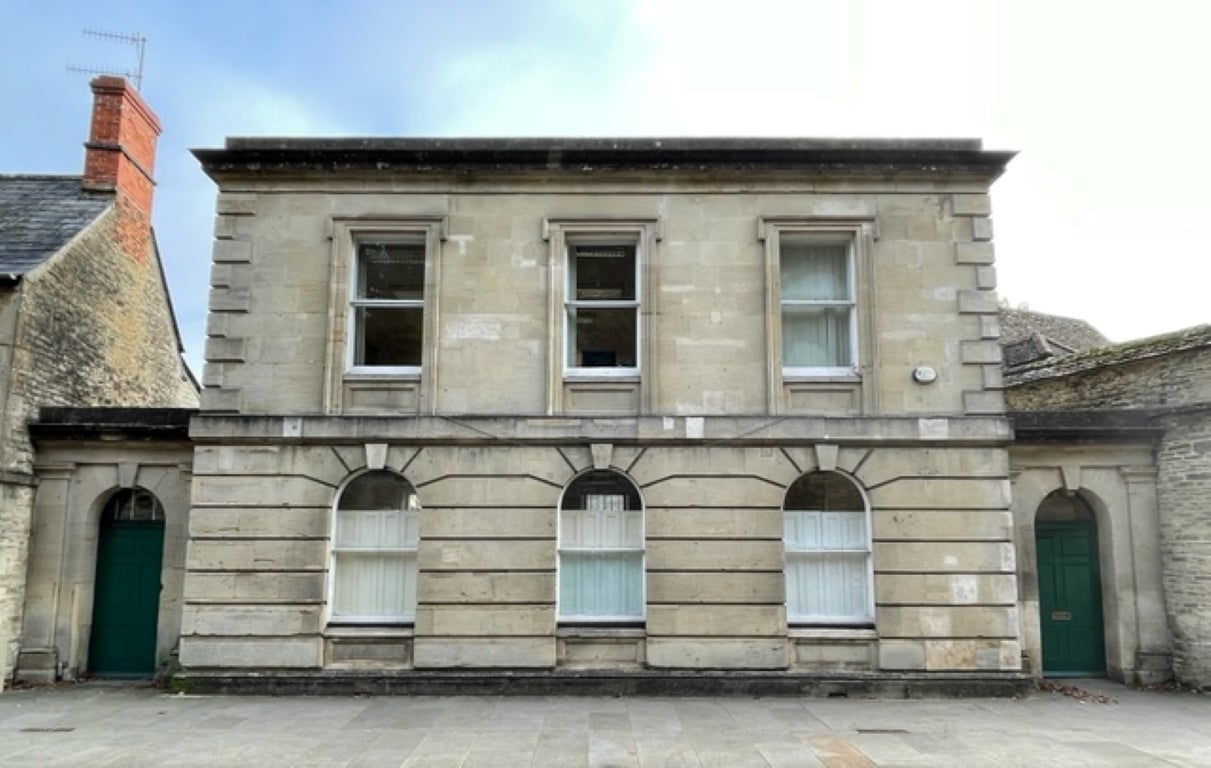
About the Seller
5.0
Platinum Seller
Premium sellers with a 4.7+ rating and 24-hour response times
Established in 1989
1stDibs seller since 2016
4,457 sales on 1stDibs
Typical response time: <1 hour
- ShippingRetrieving quote...Shipping from: Cirencester, United Kingdom
- Return Policy
Authenticity Guarantee
In the unlikely event there’s an issue with an item’s authenticity, contact us within 1 year for a full refund. DetailsMoney-Back Guarantee
If your item is not as described, is damaged in transit, or does not arrive, contact us within 7 days for a full refund. Details24-Hour Cancellation
You have a 24-hour grace period in which to reconsider your purchase, with no questions asked.Vetted Professional Sellers
Our world-class sellers must adhere to strict standards for service and quality, maintaining the integrity of our listings.Price-Match Guarantee
If you find that a seller listed the same item for a lower price elsewhere, we’ll match it.Trusted Global Delivery
Our best-in-class carrier network provides specialized shipping options worldwide, including custom delivery.More From This Seller
View AllSet of Six Antique Engravings Historical Plans Maps of Ancient Greek Cities
Located in Cirencester, Gloucestershire
Set of Six Antique Engravings
each drawing : 9 x 12 inches
provenance: private collection
condition: very good and sound condition
Description: This collection of six antique engrav...
Category
19th Century French School Landscape Drawings and Watercolors
Materials
Pencil
$184 Sale Price
20% Off
Pair of Antique Engravings Depicting Ancient Greek Medallions and Coins
Located in Cirencester, Gloucestershire
Pair of Antique Coins
each drawing : 9 x 12 inches
provenance: private collection
condition: very good and sound condition
Description: This exquisite pair of antique engravings showcases an array of meticulously detailed ancient Greek medallions...
Category
19th Century French School Landscape Drawings and Watercolors
Materials
Pencil
Collection of Six Antique Engravings of Ancient Greek Regions and Territories
Located in Cirencester, Gloucestershire
Collection of Six Antique Engravings
each drawing : 9 x 12 inches
provenance: private collection
condition: very good and sound condition
Description: This remarkable set of six ant...
Category
19th Century French School Landscape Drawings and Watercolors
Materials
Pencil
Collection of Five Antique Maps Depicting Ancient Greek and Anatolian Regions
Located in Cirencester, Gloucestershire
Collection of Five Antique Maps
each drawing : 9 x 12 inches
provenance: private collection
condition: very good and sound condition
Description: This set of five finely detailed an...
Category
19th Century French School Landscape Drawings and Watercolors
Materials
Pencil
Set of Four Architectural Engravings Ancient Greek Buildings
Located in Cirencester, Gloucestershire
Set of Four Architectural Drawings
each drawing : 9 x 12 inches
provenance: private collection
condition: very good and sound condition
Description: This set of four engravings show...
Category
19th Century French School Landscape Drawings and Watercolors
Materials
Pencil
$130 Sale Price
20% Off
Finely Detailed Watercolor of a Spanish Festival Scene with Church and Performer
Located in Cirencester, Gloucestershire
Title: Finely Detailed Watercolor of a Spanish Festival Scene with Church and Performer
by Robert Lepine (French, 1929 - 2017)
Signed: Yes
Medium: Watercolor painting on artists pape...
Category
Late 20th Century French School Landscape Drawings and Watercolors
Materials
Watercolor, Pencil
You May Also Like
A landscape drawing by Claude Lorrain, with a preliminary sketch on the verso
By Claude Lorrain
Located in PARIS, FR
This study presents a typical Roman countryside landscape: an ancient mausoleum in front of which a cart is passing by followed by two peasants. If the technique (a pen drawing on graphite lines, completed with a wash of brown and grey inks) and the signature inevitably evoke the art of Lorrain, we find on the verso of this drawing additional evidences that lead us to consider this unpublished drawing as a work by the master.
The motif of the mausoleum has been taken up in pen on the verso in a technique that can be found in several other drawings by Lorrain. There is also a study of three characters, which can be considered as preparatory to Lorrain’s painting entitled The Port of Ostia with the Embarkation of Saint Paula, leading us to claim this attribution with a dating of around 1639.
1. Claude Lorrain or the perfection of classical landscape in Rome in the 17th century
Claude Gellée was born in 1600 in Chamagne in Lorraine. Orphaned at the age of twelve, he spent a year with his brother in Freiburg, where the latter was a woodcarver. Claude Gellée then probably arrived in Rome in 1613, where he joined the workshop of Agostino Tassi (1580 - 1644) in 1617. Between 1619 and 1620 he studied for two years in Naples in the workshop of Goffredi Wals (who was himself a former pupil of Tassi).
In 1625 he returned to Lorraine for two years where he worked alongside Claude Deruet. He then returned to Rome, a city he never left for the rest of his life (except for short trips to the surrounding countryside).
From 1627 to 1650 he lived in Via Margutta. From 1635 onwards he became a renowned painter and commissions started to pour in. Considered during his lifetime as the most accomplished of the classical landscape painters, his reputation never faded.
Between 1629 and 1635 Le Lorrain often went to the Roman countryside to draw with his friend Joachim von Sandrart (1606 - 1686). He became a member of the Academy of Saint Luke in 1633, while being closely acquainted with the Bentvueghels, this guild which brought together the young Nordic painters active in Rome. In 1643 he joined the Congregation of the Virtuosi. In 1650 he moved to Via Paolina where he lived until his death.
Little is known of his intimate life. He seems to have had a daughter, Agnes, from an ancillary love affair. In 1657/ 1658 she moved in with him. Stricken with gout in 1663, he died in 1682.
2. Description of the drawing; the technique of nature studies
Two peasants are walking behind a horse-drawn cart on a road that winds through ancient tombs. While a rectangular tomb with a columned facade can be seen in the distance, the cart passes an important ancient building. It has a circular shape and its partially ruined façade is decorated with columns. The start of a second floor can...
Category
1630s Old Masters Landscape Drawings and Watercolors
Materials
Ink, Pen, Graphite
View of a Mansion in the South of France, a drawing by Claude-Joseph Vernet
By Claude-Joseph Vernet
Located in PARIS, FR
We would like to thank Madame Beck-Saiello for confirming the autograph nature of this drawing after an in-person examination.
It was probably during an excursion in the countryside near Avignon that Claude-Joseph Vernet executed this drawing, enhanced with pen and brown ink, depicting a mansion on a hilltop overlooking a small village with geometric shapes.
1. Joseph Vernet, a painter influenced by Italy
Claude-Joseph Vernet was born in Avignon in 1714, the son of Antoine Vernet (1689-1753), an artisan painter of architectural decorations, coach panels, and the like. He moved to the studio of Philippe Sauvan (1697-1792), a leading history painter in Avignon, and then worked with Jacques Viali (active 1681-1745), a decorative, landscape, and marine painter in Aix-en-Provence. Vernet's first recorded paintings were decorative overdoors executed in 1731 in the Aix townhouse of the marquise de Simiane. In 1734, Joseph de Seytres, marquis de Caumont, a leading amateur in Avignon, sponsored Vernet to make a study trip to Italy to complete his artistic education and to draw antiquities for his patron.
As Avignon was a papal territory in Vernet's day, he also had a number of useful introductions among influential churchmen when he arrived in Rome. Vernet was soon at home in the French community there, and he was encouraged by Nicolas Vleughels (1668-1737), director of the Académie de France in Rome, even though the young painter had no official affiliation with the royal institution. He likely entered the studio of the French marine painter Adrien Manglard...
Category
1730s Old Masters Landscape Drawings and Watercolors
Materials
Ink, Laid Paper, Pen, Carbon Pencil
Landscape with Trees and a Fisherman walking, a drawing by Jan Van Goyen
By Jan Josefsz Van Goyen
Located in PARIS, FR
No Dutch draughtsman ever captured the atmosphere of the rural countryside of Holland with the same atmospheric and engaging simplicity that Van Goyen achieved in drawings such as this. Indeed, his landscapes were seminal in the development of the genre. The present sketch conveys a striking sense of movement within the natural landscape, conveyed by the deftly applied strokes of chalk, from which the artist’s hand can be sensed. The composition is characteristic of his work, with the low horizon affording significance to the broad sky and the soaring birds within. This feeling of windswept motion powerfully evokes the expansive Dutch farmland with which he was evidently preoccupied.
1. Jan van Goyen...
Category
1650s Old Masters Landscape Drawings and Watercolors
Materials
Chalk, Ink, Laid Paper
View of an Antique City, a wash landscape by Jan de Bisschop (1628 - 1671)
Located in PARIS, FR
The attribution to Jan de Bisschop has been confirmed by the RKD with the following comment: "We base this attribution on the dark washes, the subject represented and the monogram".
...
Category
17th Century Old Masters Landscape Drawings and Watercolors
Materials
Ink, Pen
View of Piazza San Marco, a tempera signed by Giacomo Guardi (1764 - 1835)
Located in PARIS, FR
Signed and localized on the verso :
"Vedute di parte dalla Piazza dif.a alla Loggetta e cam
panil parte della Zecca ed in lontan Proc.e vechie e parte della chiesa
punto preso vic...
Category
Early 19th Century Old Masters Landscape Drawings and Watercolors
Materials
Tempera
Purple Cypress Tree - Coastal Fauvist Vertical Landscape
By Karen Druker
Located in Soquel, CA
Brightly colored Fauvist coastal landscape of a vivid purple cypress tree at the edge of the water, under a bright yellow sky and orange sun by Karen Druker (American, 1945). Signed ...
Category
21st Century and Contemporary Fauvist Landscape Drawings and Watercolors
Materials
Paper, Pastel, Watercolor, Pencil
$612 Sale Price
20% Off
Recently Viewed
View AllMore Ways To Browse
Unknown Italian Master
Drawings Italian 18th Century
Classical Ruins
Grand Masters
Italian Classical Paintings
Ancient Ruins
English Old Master
Old Master Italian Landscape
Ancient Provenance
Old English 18th Century
18th Century Landscape Italy
18th Century Italian Landscape
Ancient Classical Paintings
18th C Landscape
Italian Ruins Painting
Italy Ruins Painting
Grand Tour 18th Century
English Landscape Painting 18th Century
